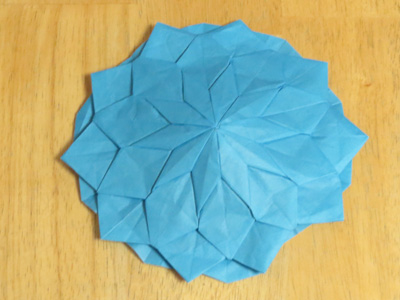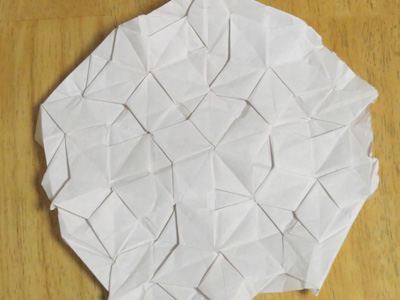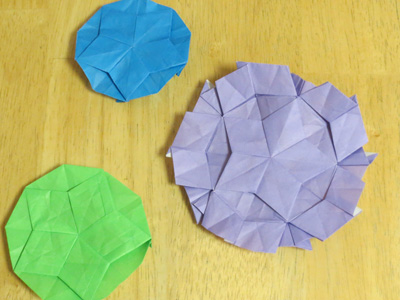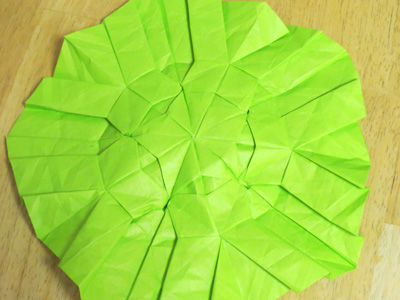I did another class at the convention, teaching my mandala tessellations. Most tessellations out there are based on a grid, either of squares or triangles, but these are based on a circle. I originally started playing with tessellations because of models like my turtle and my U.F.O., which use pleating to form a pattern on the surface of the model. I actually came up with the mandala idea at a convention, at the Monday dinner, and have since refined it. Unlike grid-oriented tessellations, the pleats are arbitrary, by eye. This is not hard to get across to advanced folders who have a good eye, but people tend to like landmarks and it can take some getting used to.
People seemed really interested in these models back at MIT last fall, where I taught them informally, and my class at OUSA was in fact full. There were a few “legit” tessellation guys in the class, notably Jeff Rutzky, who has a book Shadowfolds with Chris Palmer that explores some of the same territory, but his ideas are more developed. So as I taught the class it turned into a conversation, which was great cuz I learned a lot as well as taught.
This also led me to begin work on a new model: a penrose tessellation. This is a new and larger pattern than the one on my web site. I folded a prototype using my arbitrary-pleat method, but on this model I reached the limit of that approach. I folded a second, more legit attempt, but it didn’t want to go together. So then folded the center portion only, working out the correct sizes for the pleats. I folded successively larger sections, until I got to the third ring, where there’s a vertex where seven angles come together, three wide and four narrow. So now I have to work out complex connection in order to complete the model. But that’s cool; when its’ done it’ll be really nice. I also feel like this will be another good CP to feed to the craftRobo.
This is the last of the current flurry of origami posts for a little while. I’m working on a exhibit for Origami Heaven that has to be done in three weeks. Five pentagon-based symmetry geometric models, including some of the ones described here. I’ll let you know how that goes. Meanwhile I hope to get back spending a bit of time on rock’n’roll and other pursuits.



